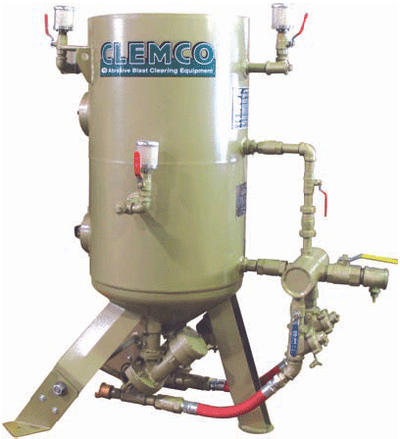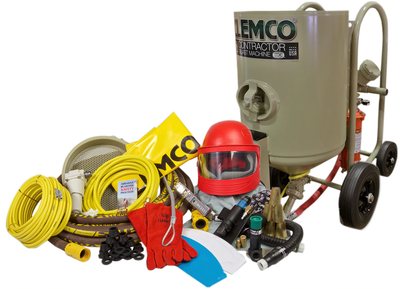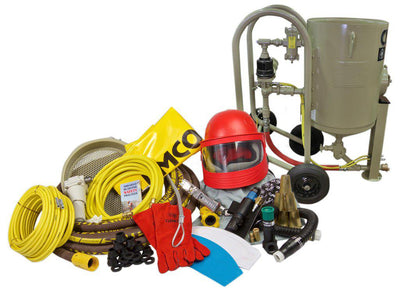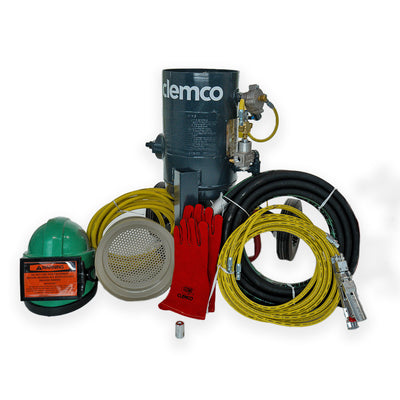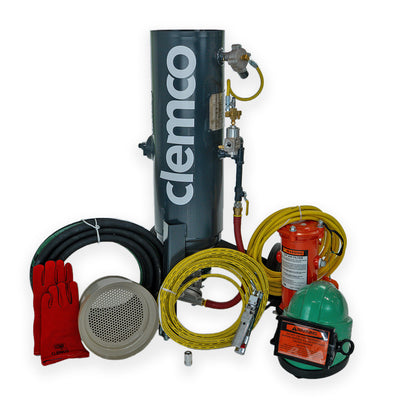Pressure vs Siphon Sandblast Pots
If your just getting started sandblasting and considering a sandblast pot, you may be looking at a siphon or pressure sandblast pot. We will cover the benefits and drawbacks of pressure and siphon sandblast pots so you can better decide which may be best for your needs.
Pressure Blast Pots
Pressure blast pots like this pot here seal and build pressure that is provided by a compressor. The pressurized air is pushed out of the blast hose where media is mixed into the air. Pressure blasting has a variety of benefits over a siphon sandblast pot. Pressure blast pots are faster than siphon blasters because they cause blast media to impact the surface of a product with a lot more force. The increased force that media will impact the surface allows you to finish work faster, it also enables you to strip stubborn surface contaminants like powder coating, strongly adhered liquid paints, and more. If you currently have a siphon blaster and you cannot seem to get your work done in a timely manner or cannot seem to remove the surface contaminant at all, this is most likely due to the limitations of siphon blasters. With a pressure blast pot, you will typically wan to verify that your pot has a ASME rating. This rating will prove that your pressure sandblast pot will safely tolerate high pressures (usually upwards of 120 PSI for a typical pressure sandblast pot). While pressure blast pots have a variety of benefits over a siphon sandblast pot there are a few drawbacks to them. The largest drawback is the extra cost associated with a pressure blast pot. The extra cost comes in because a good pressure blast pot will be welded and ASME certified, which ASME certification as well as welding are expensive.
Siphon Blast Pots
Siphon blast pots operate in a slightly different way than a pressure blast pot. A siphon blast pot draws material via suction instead of the blast media being forced via pressure. Siphon blasting is slower than pressure and is less able to remove certain stubborn surface contaminants. However they are much cheaper than a pressure blast pot. If you have a small area to try to sandblast and what your blasting off is not to strongly adhered a siphon blast pot may work. For an idea of a siphon blaster in operation you can review the clip below which will show the limited speed a siphon blast pot offers.
Final Thoughts
Ultimately the greatest versatility, speed, and effectiveness is achieved by a pressure blaster. However for small touch up blast work or when a pressure blast pot price is prohibitive and the job is not very big then a siphon blast pot can make sense.

